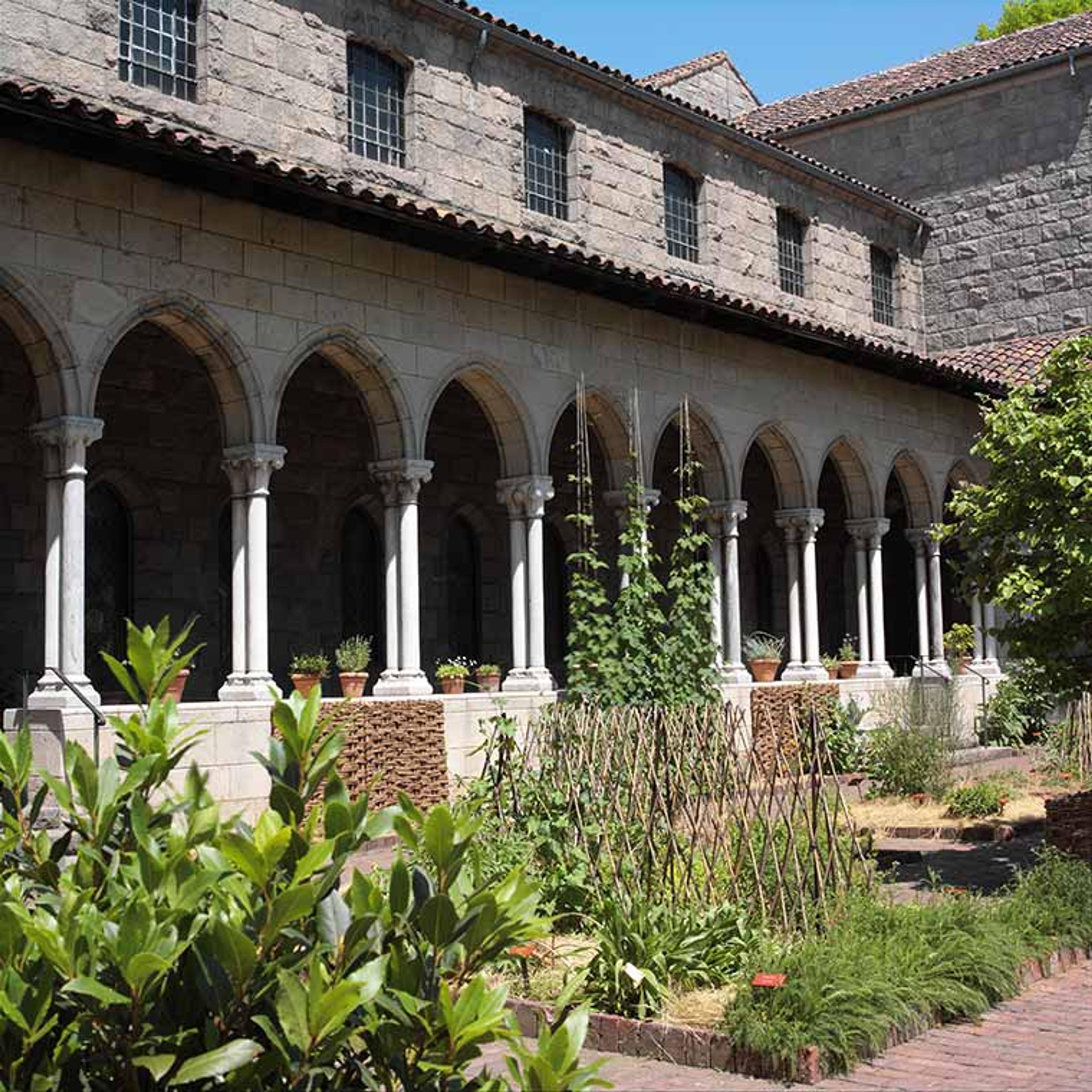
Cloister from Bonnefont-en-Comminges, late 13th to 14th century. France, Midi-Pyrénées. Marble, 54 ft. 3 in. x 49 ft. (1660 x 1490 cm). The Metropolitan Museum of Art, New York, The Cloisters Collection, 1925. 25.120.531–.1052
In the Middle Ages, there were no supermarkets or drug stores like the ones we have today. People had to grow their own food, medicine, and other materials for everyday life. This summer at The Met Cloisters, you can walk through beautiful gardens. Discover plants that were grown in Europe in the Middle Ages to use for magic, medicine, and more!
Discover how plants were used during the Middle Ages with Ella, age 8
The "Bonnefont" Garden is laid out in 19 beds organized by how the plants were used in the Middle Ages. Gardeners who work at The Met Cloisters grow between 250 and 300 kinds of plants in this garden. Want to know more? Watch the video above to see Ella, age 8, dig for facts about how plants were used during the Middle Ages.
To get to the walled garden, walk through The Met Cloisters. On your way, look for a unicorn. You can find mythical creatures, heroic knights, and powerful queens in a building designed to transport you across the ocean to Europe and back in time to 500–1500 CE.
Visit #MetKids, a digital feature made for, with, and by kids! Discover fun facts about works of art, hop in our time machine, watch behind-the-scenes videos, and get ideas for your own creative projects.
